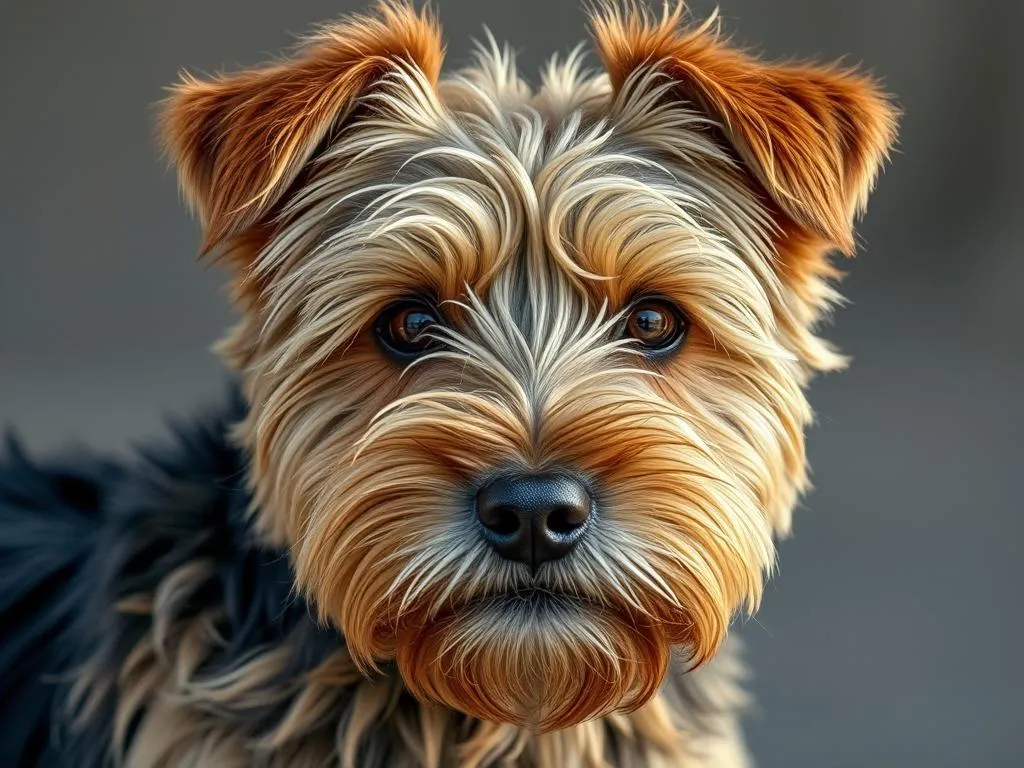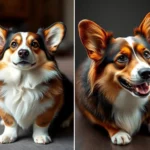
Introduction
Dog breeds hold a significant place in our hearts and homes, offering companionship, loyalty, and unique characteristics that fit various lifestyles. Among the many breeds, the Norfolk Terrier stands out as a spirited and affectionate companion. This breed has a rich history and a distinctive charm that makes it a delightful addition to any family.
Origin and History
The Norfolk Terrier has its roots in East Anglia, England, where it was initially bred for hunting small game, particularly foxes. The breed shares a common ancestry with the Norwich Terrier, but the two diverged primarily in ear shape—Norfolk Terriers have drop ears, while Norwich Terriers have erect ears. Over the years, the Norfolk Terrier has transitioned from a working dog to a beloved family pet.
Unique Characteristics
Known for their compact size, lively personality, and intelligence, Norfolk Terriers are small yet sturdy dogs. They are characterized by their wiry coat, which can come in various colors such as red, wheaten, or black and tan. Their alert eyes and endearing expressions reflect their spirited nature.
Understanding Dog Breeds
Definition of a Dog Breed
A dog breed is a group of domestic dogs with specific characteristics, including appearance, behavior, and temperament. These traits are often a result of selective breeding for particular purposes, such as herding, hunting, or companionship.
Importance of Breed Characteristics
Choosing a dog breed is crucial for potential pet owners, as each breed has unique needs, traits, and temperaments that can significantly impact family life. Understanding these characteristics helps ensure a good match between the dog’s needs and the owner’s lifestyle.
Overview of Popular Dog Breeds
Though there are many popular dog breeds like the Labrador Retriever and Golden Retriever, the Norfolk Terrier has carved its niche with its charming personality and adaptability. This makes it an excellent option for those seeking a smaller dog with a big heart.
The Norfolk Terrier
History and Origins
The Norfolk Terrier dates back to the late 19th century when it was developed to assist farmers in controlling vermin. Initially known as a “working terrier,” it gained recognition for its tenacity and ability to hunt underground. The breed was officially recognized by the American Kennel Club (AKC) in 1979, solidifying its status as a beloved companion.
Physical Characteristics
Size and Weight
The Norfolk Terrier is a small breed, typically weighing between 11 to 12 pounds and standing about 9 to 10 inches tall at the shoulder.
Coat Color and Texture
Their coat is dense and wiry, providing protection from harsh weather. Common colors include red, wheaten, and black and tan, with variations adding to their unique appearance.
Distinctive Features
One of the most notable features of the Norfolk Terrier is its drop ears, which give it an expressive and friendly look. Their tails are often docked, adding to their compact, sturdy build.
Temperament and Behavior
General Personality Traits
The Norfolk Terrier is known for its friendly and outgoing nature. They are intelligent, eager to please, and possess a playful spirit that endears them to families.
Interaction with Families and Children
These terriers thrive in family settings, showing a strong affinity for children. Their playful demeanor makes them excellent companions for kids, and they are generally gentle and affectionate.
Compatibility with Other Pets
While Norfolk Terriers can coexist with other pets, their strong prey drive may make them less compatible with smaller animals. Early socialization is crucial to fostering good relationships with other pets.
Health Considerations
Common Health Issues
Like all breeds, the Norfolk Terrier is prone to certain health issues, including hip dysplasia, patellar luxation, and certain skin conditions. Regular veterinary check-ups can help catch these issues early.
Lifespan and Care Requirements
The average lifespan of a Norfolk Terrier ranges from 12 to 15 years. Proper care, including a balanced diet, regular exercise, and mental stimulation, is essential for maintaining their health and happiness.
Importance of Regular Veterinary Check-Ups
Routine visits to the veterinarian can help monitor the health of a Norfolk Terrier and ensure vaccinations are up to date, keeping them healthy and safe.
Living with a Norfolk Terrier
Exercise Needs
Recommended Daily Activity Levels
Norfolk Terriers are energetic dogs that require at least 30 to 60 minutes of exercise each day. This can include walks, playtime in the yard, or interactive games.
Types of Exercises Suitable for Norfolk Terriers
Activities such as fetch, agility training, and obedience training can provide both physical and mental stimulation. These dogs enjoy exploring their surroundings, so off-leash time in a secure area can also be beneficial.
Training and Socialization
Best Training Practices for the Breed
Training a Norfolk Terrier can be a rewarding experience, as they are quick learners. Positive reinforcement methods, such as treats and praise, work best to encourage desired behaviors.
Importance of Early Socialization
Early socialization is crucial for a well-adjusted dog. Exposing a Norfolk Terrier to various people, pets, and environments during their formative months can help them become confident and well-mannered adults.
Tips for Effective Communication with Norfolk Terriers
Using clear commands and consistent training techniques will aid in effective communication. Engaging in fun training sessions can also strengthen the bond between the dog and owner.
Grooming Requirements
Grooming Frequency and Techniques
The wiry coat of the Norfolk Terrier requires regular grooming to prevent matting and maintain its texture. Brushing should be done at least once a week, with professional grooming recommended every few months.
Tools Needed for Proper Care
Essential grooming tools include a slicker brush, comb, and clippers for trimming. Regular ear cleaning and nail trimming are also important for overall hygiene.
Seasonal Grooming Tips
During shedding seasons, more frequent brushing may be necessary to keep the coat healthy and minimize loose hair in the home.
Choosing the Right Norfolk Terrier
Finding a Reputable Breeder
What to Look for in a Breeder
When searching for a Norfolk Terrier breeder, it’s essential to choose one who prioritizes health and temperament. A good breeder should provide health clearances for the parents and allow you to meet the puppies and their environment.
Questions to Ask Prospective Breeders
Inquire about the breeder’s experience, the lineage of the puppies, and any health issues in the breed. Asking about socialization practices and the temperament of the parents can provide insight into what to expect.
Adoption and Rescue Options
Benefits of Adopting a Norfolk Terrier
Adoption is a wonderful option for those looking to welcome a Norfolk Terrier into their home. Many dogs in rescue organizations need loving families, and adopting can be a fulfilling experience.
Resources for Finding Rescues and Shelters
Local shelters, breed-specific rescues, and online adoption platforms are great places to start. Many organizations have dedicated volunteers who can help you find a suitable match.
Costs and Budgeting
Initial Costs
The initial costs of acquiring a Norfolk Terrier can vary. Adoption fees typically range from $100 to $500, while purchasing from a breeder may cost between $1,500 and $3,000 depending on lineage and location.
Ongoing Expenses
Ongoing expenses include food, grooming, and veterinary care. Budgeting for these costs is important to ensure you can provide for your dog’s needs throughout their life.
Cost-Saving Tips for Pet Owners
Shopping in bulk for food, finding affordable grooming options, and utilizing preventive care can help keep pet ownership costs manageable.
Norfolk Terrier in Popular Culture
Representation in Media
The Norfolk Terrier has made appearances in various media, showcasing their charm and playful nature. They are often depicted as loyal companions, enhancing their appeal as family pets.
Famous Norfolk Terriers and Their Owners
Several celebrities have been known to own Norfolk Terriers, contributing to the breed’s popularity. Their presence in the public eye has helped raise awareness and appreciation for this delightful breed.
Impact of Popular Culture on Breed Popularity
As media representations of the Norfolk Terrier increase, so does interest in the breed. Their portrayal as affectionate and spirited companions resonates with many prospective dog owners.
Conclusion
The Norfolk Terrier is a unique and wonderful breed that brings joy and companionship to families. With their rich history, charming personality, and adaptability, they make excellent pets for various lifestyles. Whether you are an active individual or a family seeking a loving companion, the Norfolk Terrier could be the perfect fit.
FAQs
How do Norfolk Terriers adapt to apartment living?
Norfolk Terriers can adapt well to apartment living as long as they receive sufficient exercise and mental stimulation. Daily walks and playtime are essential to keep them happy in a smaller space.
Are Norfolk Terriers good with children?
Yes, Norfolk Terriers are generally good with children. They are playful and affectionate, making them excellent companions for kids, provided they are socialized early.
What is the average lifespan of a Norfolk Terrier?
The average lifespan of a Norfolk Terrier ranges from 12 to 15 years, depending on genetics and overall care.
How much exercise does a Norfolk Terrier need?
Norfolk Terriers require at least 30 to 60 minutes of exercise each day, including walks and playtime, to keep them physically and mentally stimulated.
With their spirited nature and loving demeanor, Norfolk Terriers continue to delight families worldwide. Their adaptability and charm make them a breed worth considering for anyone looking to add a furry friend to their life.









